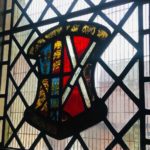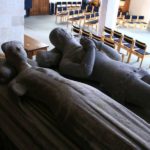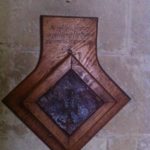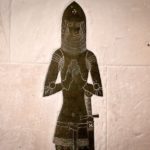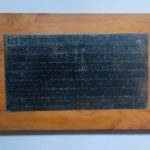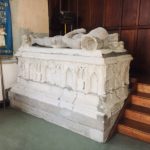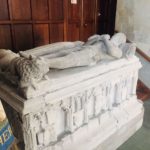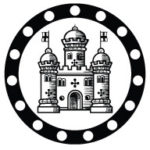St Peter’s Church, Great Berkhamsted
Earliest records show that the first known rector of St Peter’s Church, Robert de Tuardo, was installed in 1222 by the Bishop of Lincoln, Hugh of Wells.
From Saxon times, a much older St Mary’s Church had existed 1.5 miles (2.4km) north of this site, but after the Norman invasion, as the centre of political power and wealth shifted to Berkhamsted Castle, so too the town began to flourish around to the castle. The centre of ecclesiastical power centred on St Peter’s Church, and the old Saxon parish became known as “the north church” – today’s Northchurch.
From 1381, the rectors of Great Berkhamsted were presented by the reigning monarch of England, and from 1722 by the Duke of Cornwall, indicating a strong link between the parish church and the royal residence of Berkhamsted Castle. This tradition continued until 1862, when the castle estate was acquired by the Earls of Brownlow.
One rector of St Peter’s enjoyed particular royal favour: John de Waltham, a close friend of King Richard II. In 1379, Richard appointed him as Rector of St Peter’s, and de Waltham went on to become Lord Privy Seal of England and Bishop of Salisbury. Upon the death of John de Waltham, Richard had him buried in the Chapel of Edward the Confessor in Westminster Abbey. This was a highly unusual decision and an indication that Richard held him in great affection – de Waltham was the only commoner ever to be buried in the royal chapel.
Over the centuries, St Peter’s Parish Church has been developed and extended. The oldest part of the building is the 13th-century chancel, which still contains some medieval stained glass windows. Much of the church we see today was built in the 13th and 14th centuries, and the clock tower that dominates the town skyline was added around 1535-6.
Although most of the ancient memorials were removed by well-meaning Victorian restorers, there is still evidence of the church’s ancient connections with Berkhamsted Castle.
During restoration works in 1870, the medieval floor tiles were taken up and a new floor was laid. One encaustic ceramic tile was preserved and has been put on display in the south transept. This tile, thought to be 14th century or earlier, is emblazoned with a fleur-de-lys (lily flower), an ancient heraldic symbol associated with the Virgin Mary and French monarchy. It is very similar in style to ceramic tiles found in Berkhamsted Castle by archaeologists and may have the same origin.
One of the most striking monuments is the medieval chest tomb in the Lady Chapel depicting the recumbent figures of a knight in full armour and his lady. This is thought to be the tomb of Henry of Berkhamsted and his wife. Henry was Constable of Berkhamsted Castle in the mid-14th century and would have fought with Edward the Black Prince at the Battles of Crécy (1346) and Poitiers (1356). The heraldic shields around the base include the crests of the Incent and Torrington families, as well as a fork-tailed (queue fourchée) lion of the Burghersh family, suggesting a family link with Geoffrey Chaucer, clerk of works at Berkhamsted Castle. This is a typical example of a medieval chest tomb; it is interesting to compare this with the tomb of Henry’s master, Edward the Black Prince, which can be seen in Canterbury Cathedral.
Some surviving monumental brasses in the church commemorate people associated with the castle, notably a brass depicting John Raven (d.1385) in battle armour, the squire to Edward the Black Prince. There are also brasses in memory of Robert Incent (d.1485) and Katherine Incent (d.1521). Robert was Secretary to Lady Cecily Neville, Duchess of York, the last royal resident in Berkhamsted Castle. Their son, John Incent became Dean of St Paul’s Cathedral in London in 1540 and founded the Berkhamsted School in 1541.
Cecily Neville herself is commemorated in a piece of Victorian stained glass which depicts her coat of arms. The window is at the west end of the church on the south side, inside the gallery staircase. It can be easily viewed from outside the church, to the right of the west door.


